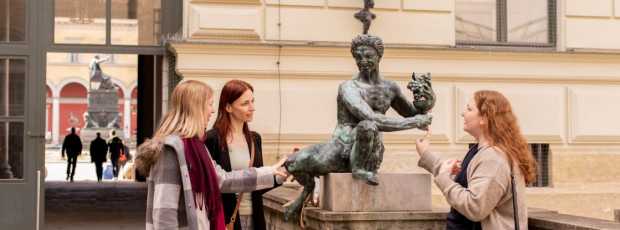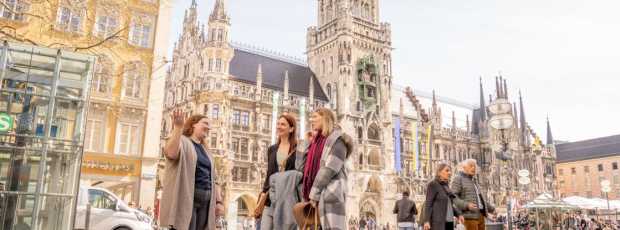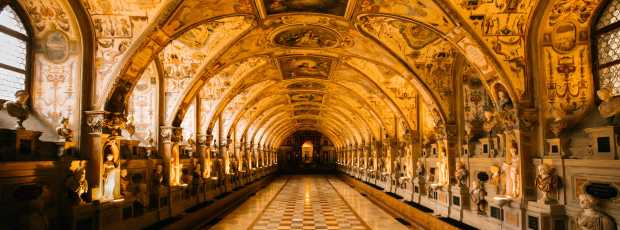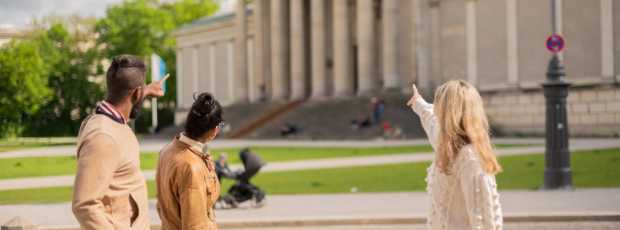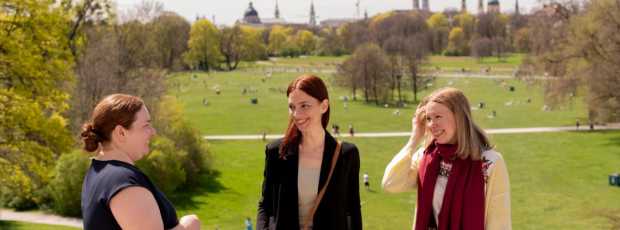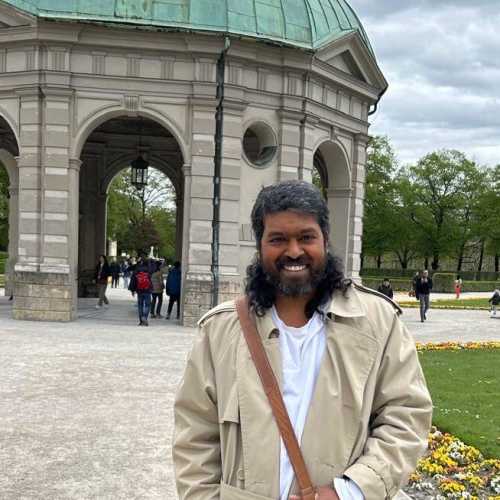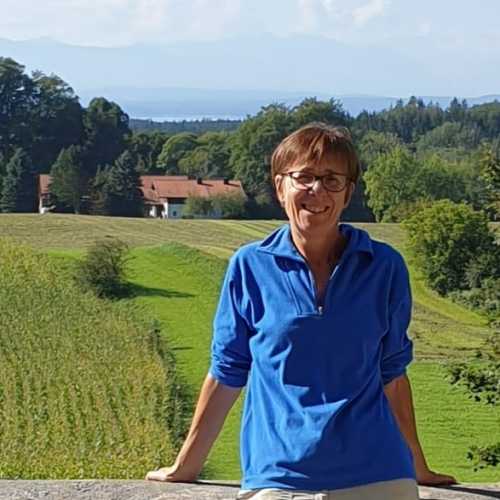Table Of Contents
- Why Your Munich Neighborhood Choice Matters More Than You Think
- Altstadt (Old Town): The Classic Munich Experience
- Maxvorstadt: Museums and University Life
- Schwabing: Bohemian Charm Meets Modern Convenience
- Lehel: Upscale Tranquility Near the Center
- Ludwigsvorstadt: Strategic Position Near the Train Station
- Theresienwiese: Oktoberfest Central and Beyond
- Glockenbachviertel: Trendy Nightlife and Local Culture
- Haidhausen: Authentic Local Life Across the River
- Navigating Munich's Public Transport System
- Where Should I Stay in Munich for the First Time?
- Budget Considerations Across Munich Neighborhoods
- Making Your Final Decision
After years of hosting travelers and exploring every corner of this Bavarian capital, I've learned that visiting Munich successfully depends entirely on what you value most during your stay. Some prioritize being steps away from the munich city centre's historic charm, while others prefer the vibrant nightlife of Glockenbachvierrel or the peaceful elegance of Lehel with its excellent location near top attractions.
![[IMAGE: Munich cityscape showing various neighborhoods with the Alps in the background. Filename: munich-neighborhoods-overview.jpg]]()
Why Your Munich Neighborhood Choice Matters More Than You Think
Munich's layout follows a logical pattern that makes neighborhood selection crucial. The city centres around Marienplatz in the old town, with distinct areas radiating outward like spokes on a wheel. Each neighborhood connects differently to public transport, offers varying price points for hotel rooms, and attracts different crowds.
I've seen visitors struggle with poor location choices. Staying too far from munich central station or U-Bahn lines can add hours to your daily travel time. Choosing areas without considering your priorities can mean missing the Munich experience you're seeking, whether that's cultural attractions, fine dining, or simply a quieter stay.
The key is understanding that Munich operates on efficiency and accessibility. The public transport system is excellent, but knowing which areas offer the best walking distance to major attractions will enhance your stay significantly. Being centrally located doesn't always mean the city centre, some best neighbourhoods provide better value while remaining well connected to everything you want to see.
Altstadt (Old Town): The Classic Munich Experience
When people ask about optimal Munich accommodation, I often point them toward the old town first. This historic center represents Munich at its most authentic, where medieval streets meet world-class shopping and traditional beer gardens that serve excellent Bavarian cuisine all year.
The old town stretches from Marienplatz to the Munich Residenz, encompassing the heart of Munich's tourist attractions. Staying here means you're within an easy walk of the Viktualienmarkt, the famous Glockenspiel, and numerous churches that define Munich's skyline. The Munich Residenz itself offers fascinating insights into the lives of Bavarian royalty who once ruled from this magnificent palace complex. You're also a short walk from the opera house and just a stone's throw from some of the city's finest restaurants.
However, the old town comes with trade-offs. Hotels here command premium prices, and summer crowds can make simple walks feel like navigating obstacle courses. The area can be noisy, particularly during the annual Oktoberfest celebrations or weekend evenings when the beer halls fill with celebrating locals and tourists.
For accommodation, the old town offers everything from luxury hotels like the Bayerischer Hof to boutique properties like Hotel Platzl tucked into historic buildings. The Hotel Schlicker provides a perfect example of old town charm with modern amenities, including air con in most rooms, though you'll need to book early as these properties fill quickly. The historic Platzl Hotel, located near the famous Hofbräuhaus, offers another excellent option with rooms that blend traditional Bavarian style with modern comfort.
![[IMAGE: Marienplatz with the New Town Hall and Glockenspiel during golden hour. Filename: marienplatz-golden-hour.jpg]]()
Looking for a private city experience in Munich?
Explore the city with a local who plans a private day just for you; no groups, no scripts.
Maxvorstadt: Museums and University Life
Maxvorstadt represents Munich's intellectual heart, home to two universities and the renowned Kunstareal museum district. This area offers a different perspective on Munich accommodation, particularly for culture enthusiasts and those seeking a more local residential feel.
The neighborhood stretches north from the old town, bounded by the university district and several major museums, including the Pinakothek galleries and the Pinakothek der Moderne. Staying in Maxvorstadt means you're walking distance from world-class art collections, including impressive art nouveau buildings, while enjoying a more authentic Munich residential experience. The Deutsches Museum, though located on Museum Island, is easily accessible from here via public transport.
This area appeals to visitors who want to experience Munich beyond the tourist-heavy city centre. The streets here feel more lived-in, with local cafes, bookshops, and smaller beer gardens that cater to students and residents rather than tour groups. Many hotels in this area offer rooms with modern amenities, and several feature fitness studio facilities for guests.
Public transport connections are excellent, with multiple U-Bahn stations providing quick access to the central station and other major attractions. The S-Bahn also connects efficiently to day trip destinations. The area maintains a quieter atmosphere compared to the old town, making it ideal for those who prefer peaceful evenings after busy sightseeing days, especially during late September when fewer crowds make exploration more pleasant.
![[IMAGE: The Pinakothek museums in Maxvorstadt district. Filename: maxvorstadt-museums.jpg]]()
Schwabing: Bohemian Charm Meets Modern Convenience
Schwabing has long been Munich's bohemian quarter, attracting artists, writers, and free spirits since the early 20th century. Today, it offers one of the most balanced accommodation options in central Munich, combining cultural richness with excellent amenities and accessibility to the Englischer Garten.
The neighborhood centers around Leopoldstraße, Munich's longest street, which runs from the university area to the city's northern suburbs. This area provides quick access to both the old town and the English Garden, Munich's massive central park, where locals and visitors alike enjoy outdoor activities year-round. The nearby Schwabing West district offers an even more residential feel with excellent restaurants and local charm.
Schwabing's character differs markedly from the old town. Instead of medieval architecture, you'll find elegant buildings, trendy restaurants, and a nightlife scene that caters to locals rather than tourists. The area maintains its artistic heritage while offering modern conveniences, with many hotels providing well-appointed rooms and contemporary amenities.
For accommodation, Schwabing offers mid-range hotels and guesthouses that provide better value than old town properties. The area's excellent public transport connections mean you can reach Marienplatz in under 15 minutes while enjoying a more authentic Munich neighborhood experience. Many properties here are among the best hotels for those seeking character without the premium old town pricing.
The English Garden's proximity makes Schwabing particularly appealing during warmer months, from late September through early October, when the weather remains pleasant. You can start your day with a jog through the park, spend your afternoon exploring central Munich, and return to a peaceful neighborhood for dinner at local restaurants that serve everything from traditional fare to international cuisine.
![[IMAGE: Leopoldstraße in Schwabing with cafes and shops. Filename: schwabing-leopoldstrasse.jpg]]()
Lehel: Upscale Tranquility Near the Center
Lehel represents Munich's upscale residential character, offering a refined accommodation choice for those seeking elegance and tranquility. This neighborhood sits between the old town and the Isar River, providing quick access to major attractions while maintaining a peaceful residential atmosphere with an excellent location for exploring Munich.
The area features some of Munich's most beautiful architecture, including the Bavarian National Museum and numerous historic churches. Staying in Lehel means you're within an easy walk of the old town while enjoying tree-lined streets and a sophisticated local environment. The Altstadt Lehel district combination perfectly balances historic charm and residential calm.
Lehel's location offers unique advantages. You can walk to Marienplatz in 10 minutes, reach the Englischer Garten in 5 minutes, and access the Isar River's walking paths for morning or evening strolls. The neighborhood combines urban convenience with natural beauty, making it ideal for those who appreciate both the big-city amenities and small-town tranquility.
Hotels in Lehel tend toward the boutique and luxury categories, reflecting the area's upscale character. Many properties offer spacious rooms with premium amenities and personalized service. The prices are generally higher than in other areas, but the combination of location, atmosphere, and amenities often justifies the investment for travelers seeking the best hotels Munich has to offer.
![[IMAGE: Elegant residential street in Lehel with traditional Munich architecture. Filename: lehel-residential-street.jpg]]()
What if your day in Munich was planned by someone who knows it — and you?
City Unscripted matches you with a local host who creates a private experience based on your interests, not a set route.
Ludwigsvorstadt: Strategic Position Near the Train Station
Ludwigsvorstadt offers practical advantages that make it a strong contender for first-time visitors to Munich. Located directly south of the old town and home to Munich's main central station, this area provides unmatched transportation access for those visiting Munich by train or needing connections to the airport.
The neighborhood's proximity to the central station makes it ideal for travelers arriving by rail or needing frequent access to airport connections via S-Bahn. You can walk from the central station to the old town in 10 minutes, making this area perfect for those who want central access without old town prices. The area also offers budget hotels alongside more upscale options, providing rooms for every budget level.
Ludwigsvorstadt has transformed significantly in recent years. What was once considered a transitional area now features modern hotels, international restaurants, and improved safety measures. The area maintains its multicultural character while becoming increasingly visitor-friendly, with many establishments offering air con and modern amenities.
The main drawback is the area's urban feel. Ludwigsvorstadt lacks the historic charm of the old town or the residential character of Schwabing. However, for practical travelers who prioritize location and transport access, this area provides excellent value with convenient access to day trips throughout Bavaria.
Hotels near the central station range from budget-friendly chains to business-class properties like Hotel Lux, which offers comfortable rooms and modern facilities. The area's development has brought new accommodation options that cater specifically to travelers seeking convenience and value while maintaining easy access to all of Munich's attractions.
![[IMAGE: Munich Hauptbahnhof (main train station) exterior. Filename: munich-hauptbahnhof.jpg]]()
Theresienwiese: Oktoberfest Central and Beyond
Theresienwiese presents a unique consideration for Munich accommodation, particularly for visitors timing their trips around the famous festival. This area centers around the massive Oktoberfest grounds where the world's most famous beer festival takes place annually from late September through early October.
During Oktoberfest season, staying near the Oktoberfest grounds offers unmatched convenience for festival-goers. You can walk to the beer tents, avoid crowded public transport, and easily return to your accommodation when needed. The area transforms completely during the festival, with special events and extended hours throughout the neighborhood. However, you'll need to book early as rooms fill up quickly and prices peak during this period.
Outside of Oktoberfest season, Theresienwiese offers different advantages. The area provides quick access to the old town via public transport while maintaining lower accommodation prices than central locations. The neighborhood feels authentically Munich without the tourist crowds, particularly past December when the area returns to its quiet residential character.
The Theresienwiese area includes several hotels that cater specifically to Oktoberfest visitors, though they're equally suitable year-round. These properties often offer better rates during non-festival periods while maintaining the same level of service and amenities. Many hotels provide comfortable rooms with modern facilities, including air con for the warmer festival months.
Public transport connections are excellent, with multiple U-Bahn lines serving the area. You can reach Marienplatz in under 10 minutes, making this area suitable for general Munich exploration and day trips to surrounding attractions like Nymphenburg Palace, despite its primary association with Oktoberfest.
![[IMAGE: Theresienwiese field during Oktoberfest with beer tents. Filename: theresienwiese-oktoberfest.jpg]]()
Glockenbachviertel: Trendy Nightlife and Local Culture
Glockenbachviertel represents Munich's modern creative spirit, offering a compelling answer to what is the best area to stay in Munich for those seeking vibrant nightlife and local culture. This trendy neighborhood south of the old town has become Munich's premier entertainment district.
The area features numerous bars, clubs, and restaurants that cater primarily to locals rather than tourists. Staying in Glockenbachviertel means you're walking distance from some of Munich's best things to do in Munich at night, from craft cocktail bars to live music venues
The neighborhood's character reflects Munich's younger, more international side. You'll find vintage shops, independent cafes, and restaurants serving cuisine from around the world. The area maintains its local feel while welcoming visitors who want to experience Munich's contemporary culture.
Accommodation options in Glockenbachviertel lean toward boutique hotels and modern guesthouses. The area's development has brought new properties that reflect its trendy character while maintaining reasonable prices compared to the old town.
Public transport access is excellent, with multiple U-Bahn stations providing quick connections to major attractions. The neighborhood's central location means you can walk to the old town in 15 minutes while enjoying a more dynamic local environment.
![[IMAGE: Trendy bar district in Glockenbachviertel at night. Filename: glockenbachviertel-nightlife.jpg]]()
Tip
We match you with the right host, not just any guide.Want to experience the real Munich with someone who lives there?
A fully private experience, planned and led by a local host who tailors the day to you
Haidhausen: Authentic Local Life Across the River
Haidhausen offers insight into authentic Munich life, representing the best area in Munich to stay for those seeking genuine local experiences. Located across the Isar River from the old town, this neighborhood maintains its traditional character while providing easy access to major attractions.
The area features some of Munich's most authentic beer gardens, local markets, and traditional restaurants that serve residents rather than tourists. Staying in Haidhausen means you're experiencing Munich as locals do, with morning bakery visits, neighborhood cafes, and evening strolls along the river.
Haidhausen's architecture reflects Munich's growth in the 19th century, with elegant buildings and tree-lined streets that create a peaceful residential atmosphere. The neighborhood feels distinctly Bavarian while offering modern amenities and services.
The area's location provides unique advantages for exploring Munich. You can walk across the river to reach the old town, visit the Deutsches Museum on Museum Island, or explore the Isar River's walking and cycling paths. Public transport connections are reliable, though the area's walkability makes many destinations accessible on foot.
Hotels in Haidhausen tend toward smaller, locally-owned properties that reflect the neighborhood's authentic character. These establishments often provide more personalized service and local insights than larger chain hotels.
![[IMAGE: Traditional beer garden in Haidhausen with locals enjoying afternoon drinks. Filename: haidhausen-beer-garden.jpg]]()
Navigating Munich's Public Transport System
Understanding Munich's public transport system is crucial when choosing the best area to stay in Munich for tourists. The city's S-Bahn and U-Bahn networks connect all major neighborhoods efficiently, but some areas offer superior access to multiple lines.
The train station serves as Munich's central transport hub, with connections to the airport, other German cities, and regional destinations. Areas within walking distance of the train station provide advantages for travelers with luggage or tight schedules.
Most Munich neighborhoods connect to the public transport system within walking distance. The key is understanding which areas offer redundancy, multiple transport options that provide flexibility when one line experiences delays or maintenance.
Public transport in Munich operates on an honor system with occasional inspections. Purchasing day passes or weekly passes often provides better value than individual tickets, particularly for visitors staying multiple days and exploring various neighborhoods.
The transport system extends beyond the city center, making it practical to stay in outer neighborhoods while maintaining easy access to central attractions. This flexibility allows for accommodation choices based on budget and preferences rather than just proximity to major sites.
![[IMAGE: Modern U-Bahn station in Munich showing clean, efficient design. Filename: munich-ubahn-station.jpg]]()
Where Should I Stay in Munich for the First Time?
First-time visitors often struggle with neighborhood selection because they're unsure of their priorities. Munich's accommodation choice for newcomers depends on balancing several factors: budget, interests, and tolerance for crowds.
For first-timers who want to experience Munich's historic character, the old town provides unmatched access to major attractions within walking distance. You'll pay premium prices, but you'll save time and transportation costs while experiencing Munich's medieval heart. The area puts you within a short walk of the Munich Residenz, the Deutsches Museum, and numerous restaurants serving traditional Bavarian cuisine.
Visitors who prefer a more balanced approach should consider Maxvorstadt or Lehel. These areas provide quick access to the old town while offering a more authentic Munich residential experience. You'll interact with locals, discover neighborhood cafes, and avoid the constant tourist crowds while still maintaining accessibility to sights of significant attractions and fine dining establishments.
Budget-conscious first-time visitors might prefer areas like Ludwigsvorstadt or Haidhausen. These neighborhoods offer good value while maintaining excellent public transport connections to major attractions. You'll spend slightly more time traveling, but you'll save significantly on accommodation costs. Many budget hotels in these areas offer comfortable rooms with essential amenities.
The key is being honest about your travel style. If you're someone who likes to return to your hotel frequently throughout the day, staying in or near the old town makes sense. If you prefer to start early and return late, outer neighborhoods provide better value without sacrificing access to Munich experiences. For car enthusiasts interested in day trips to places like the Allianz Arena or BMW Welt, staying near areas with good parking and highway access might be worth considering.
![[IMAGE: First-time tourists consulting a map in Marienplatz. Filename: first-time-tourists-marienplatz.jpg]]()
Ready to plan your perfect day in Munich?
Start your experienceBudget Considerations Across Munich Neighborhoods
Accommodation costs vary significantly across Munich neighborhoods, with the old town commanding the highest prices and outer areas offering the best value. Understanding these price differences helps optimize your accommodation budget while maintaining access to desired attractions.
The old town features Munich's most expensive hotels, with premium properties like Hotel Schlicker and luxury establishments charging rates that reflect their historic locations. These hotels offer unmatched convenience but require substantial budget allocation.
Mid-range neighborhoods like Schwabing and Maxvorstadt provide better value while maintaining character and convenience. Hotels in these areas typically cost 20-30% less than old town properties while offering similar amenities and service levels.
Budget-friendly areas include Ludwigsvorstadt and Haidhausen, where accommodation costs can be 40-50% lower than old town prices. These neighborhoods require additional travel time to reach major attractions but offer significant savings for extended stays.
Seasonal pricing affects all Munich neighborhoods, with the Oktoberfest season commanding premium rates across the city. Booking accommodations well in advance helps secure better rates, particularly in popular areas like Theresienwiese during festival season.
Consider accommodation costs as part of your overall Munich budget. Saving money on hotels allows for more dining, entertainment, and shopping opportunities while maintaining access to the city's attractions through public transport.
![[IMAGE: Range of accommodation options from budget to luxury in Munich. Filename: munich-hotel-options.jpg]]()
Making Your Final Decision
Choosing where to stay in Munich ultimately depends on your personal priorities and travel style. After helping countless visitors navigate this decision, I've learned that the ideal Munich neighborhood is the one that aligns with your specific needs and preferences, whether you're seeking the bustling energy of central Munich or the peaceful charm of residential areas.
Consider your daily routine: Do you prefer to walk to attractions or don't mind using public transport? Are you planning to spend most of your time in the city centre, or do you want to explore various neighborhoods and take day trips to places like Nymphenburg Palace? Will you be returning to your hotel rooms frequently, or do you prefer to stay out from morning until night?
Think about your accommodation priorities: Is location more important than amenities like air con and fitness studio access? Do you prefer authentic local experiences or tourist-focused convenience? Are you traveling during peak season when you need to book early and flexibility is limited, or do you have more options to find the best hotels at better rates?
Consider the seasonal aspects of visiting Munich. In December, the Christmas markets create magical atmospheres but also bring crowds. Late September and early October offer pleasant weather but coincide with Oktoberfest. For fewer crowds and a more authentic experience, consider visiting during quieter months when hotel rooms are more readily available and restaurants offer a more relaxed dining experience.
Remember that Munich's excellent public transport system means no neighborhood is truly isolated from the city's attractions. The S-Bahn and U-Bahn networks connect efficiently, whether you're traveling from the central station to the Englischer Garten or from your hotel to BMW Welt for car enthusiasts. The key is finding the area that provides the right balance of convenience, character, and value for your specific trip.
Whatever area you choose, Munich offers experiences that will create lasting memories. The city's combination of historic charm, modern amenities, and Bavarian hospitality ensures that your stay will be memorable regardless of which neighborhood becomes your Munich home base. From fine dining establishments to traditional beer gardens, from world-class museums to peaceful parks, Munich provides something special in every district.
![[IMAGE: Happy tourists enjoying their Munich accommodation choice. Filename: satisfied-munich-visitors.jpg]]()
Planning your Munich visit? Each neighborhood offers unique advantages for different types of travelers. Consider your priorities, budget, and travel style when making your decision, and remember that Munich's efficient public transport system connects all areas to the city's major attractions.
What if your day in Munich was planned by someone who knows it — and you?
City Unscripted matches you with a local host who creates a private experience based on your interests, not a set route.
Want to experience the real Munich with someone who lives there?
A fully private experience, planned and led by a local host who tailors the day to you


